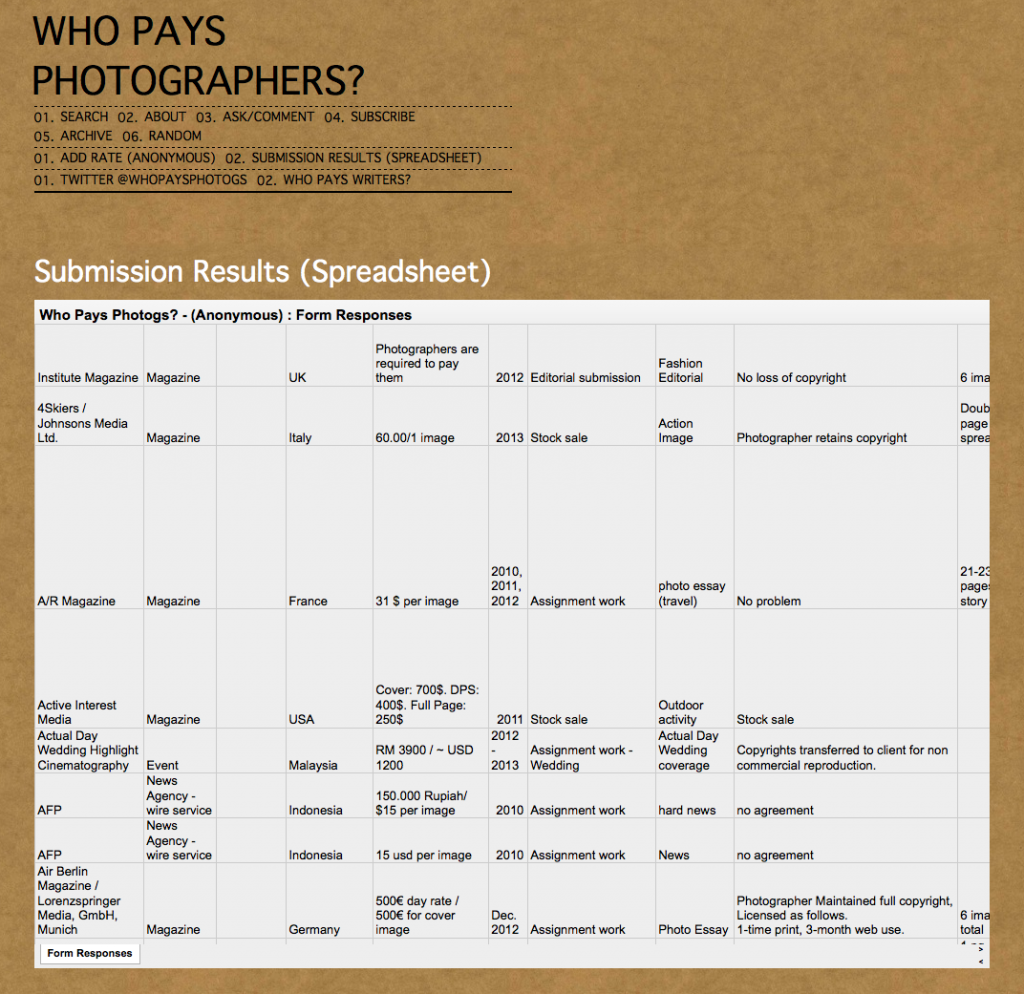Archive for August, 2014
Digital Shooting with Kodachrome and Velvia
August 28th, 2014by Gwyn Headley
Managing Director
Tags: film stock, Fuji Velvia, Kodachrome, ORWOChrom, Photoshop, plug-ins
Last night a brilliant idea came to me in my dreams. Why not program the CCD sensor in your camera to mimic the effect of your favourite film stock? (if you can remember what film was.)
As is often the case, someone else had not only had the same idea but had done something about it, and what’s more, many, many years ago and far more intelligently than me. Instead of the insanely complex reprogramming of hardware, people have created Photoshop plug-ins that can mimic the film stock of yesteryear. But by experimenting with the Channel Mixer settings, you can replicate these yourself.
Years ago I set the fotoLibra subscription level at £6 as month because that was the cost of a roll of Fuji Velvia, the finest film for recording buildings in the British countryside because it loved doing greys and greens. And that’s all I photographed really, because as you all know I am NOT a photographer, I am just a bloke with a camera.
If you went to a fairground, or visited New England in the fall, or went on a beach holiday, the Velvia would be useless. Instead you’d be taking boxes and boxes of Kodachrome, incomparable with reds and yellows and oranges.
And now there are plug-ins, or Actions, or Channel Mixer tips available for many of your favourite film stocks. To show you how they work, I’ve hacked a couple of my own images about. Criticism of my work is NOT solicited or even permitted; these are simply examples to show the effects these Channel Mixers can achieve.
I am awed by the quality of work produced by fotoLibra’s contributors, and I’m diffident about offering any hints or tips to you, but some of you may have forgotten these tricks and might enjoy playing with them.
VELVIA EFFECT USING CHANNEL MIXERS
1. Layer> New Adjustment Layer> Channel Mixer> Click OK
2. Make these changes to each of the red, green, and blue sliders for each
output channel
3. These changes are guides which you can vary, but try and make sure the Total always = +100%Output Channel: Red
> Change Red Slider to: 141%
> Change Green Slider to: -20%
> Change Blue Slider to -21%Output Channel: Green
> Change Red Slider to: -21%
> Change Green Slider to: 144%
> Change Blue Slider to -20%Output Channel: Blue
> Change Red Slider to: -21%
> Change Green Slider to: -20%
> Change Blue Slider to 144%
KODACHROME EFFECT USING CHANNEL MIXERS
1. Layer> New Adjustment Layer> Channel Mixer> Click OK
2. Make these changes to each of the red, green, and blue sliders for each
output channelOutput Channel: Red
> Change Red Slider to: 140%
> Change Green Slider to: -20%
> Change Blue Slider to -20%Output Channel: Green
> Change Red Slider to: 10%
> Change Green Slider to: 80%
> Change Blue Slider to 10%Output Channel: Blue
> Change Red Slider to: 0%
> Change Green Slider to: 0%
> Change Blue Slider to 100%
I don’t think anyone has managed an ORWOChrom effect yet but I will tell you the moment I hear about it.
The last time I had a brilliant idea in my dreams I briefly woke and wrote it down. When I awoke, the piece of paper by my bed read “Rubber Hammers”.
Hotmail and fotoLibra
August 7th, 2014This is getting beyond a joke.
Yesterday our web editor Jacqui Norman sent out a Picture Call to all our contributors. Nearly 50,000 photographers have signed up to fotoLibra since we started ten years ago. When people leave, we remove their names from our mailing list.
Yet Jacqui’s simple request for images to be purchased by a long-established and reputable British magazine, paying fair prices, has not reached 3,850 of our contributors because Hotmail has classed it as spam.
They are preventing us from communicating with members who have voluntarily signed up to fotoLibra’s services.
How can they do that?
They just can. Some Hotmail computer in Seattle noticed a small company in Britain was sending out 3,850 emails to Hotmail subscribers once a fortnight, and arbitrarily blocked it.
Nobeody read the emails. Nobody checked the content. Nobody asked the sender (that’s us) what on earth it thought it was doing, emailing nearly 4,000 Hotmail members. It just blocked us.
That’s harming its own subscribers more than it harms us, because it’s our Hotmail members who are deprived of submitting images to the Picture Call. People who use other email suppliers get to see the Picture Call, submit their images and will no doubt make sales.
But Hotmail subscribers won’t get that chance. That’s tough on them.
And exasperating for us.
Money For Photographs
August 1st, 2014by Gwyn Headley
Managing Director
Tags: Cape Town, fotoLibra, Greg Lumley, payments, photo, sales, Who Pays Photographers
Is it August already? Where does the time go? And where does the money go?
In a week where Greg Lumley, a South African photographer, made the news by offering a unique ultra-hi res print of his gorgeous photograph of Cape Town for $35,000, an influential photo magazine despondently commented that “Photography as a business is competing in a race to the bottom. Photographs are regularly devalued by people who steal them, agencies that sell them for a pittance, and photographers who are willing to work for free.”
It is very true that it’s a rough time to be in the picture sales business. Clients have lost interest in the quality of the image; their sole concern is price. National newspapers are a closed shop — management won’t allow picture desks to use anyone other than their contracted agency, unless the paper’s readers give them up for free, an acquisitions policy energetically pursued by the BBC among many others. And the agency’s photographers are up in arms because their images are being traded for pence.
Meanwhile photographers spend more and more on kit which makes their already great images even better, and still no one is buying. Tiny publishers who 20 years ago would come cap in hand for permission to buy from the lordly picture libraries now want to pay prices for RM images that you’d expect to see on a £50,000 a month contract. Mind you, they don’t get them; not from us at any rate. It’s like being bullied at school. Once they start picking on you, even the weediest gurly will fancy his chances chiz chiz.
Yesterday I came across this eye-opener of a website, Who Pays Photographers?
It’s a crowd-sourced spreadsheet of publishers around the world who pay — or don’t pay — for photography. It makes riveting, if clunky, reading. Everyone who’s ever sold a picture, or tried to, should have a look at this. And contribute, if you can.
The site owner writes: “[This is] a space to list how much — and how little — magazines, newspapers, websites, NGOs and corporations pay photographers. Editorial, commercial, advertising, entertainment — any and all presented. Listing based on anonymous submissions. This is intended as an exercise in sharing, rather than shaming — but feel free to warn your fellow photogs about deadbeats.”
The creator of this fascinating site prefers to remain anonymous, but gives credit for the idea to Manjula Martin, who devised the ‘Who Pays Writers?‘ website. I’d remain anonymous too if I came up with the bowel-tinged background colour of the site. Maybe it looks OK in Windows. It certainly doesn’t on a Mac.
I remember reading last year on several photographic forums that more than one American photographer was claiming recent $10,000 sales for book front cover image usage. But to a man they were too bashful to reveal the names of the books, the publishers, or even to show off their expensively purchased images.
Oddly, those sort of claims don’t appear on the Who Pays Photographers? site. But reports of offers of “picture credits” abound.
DON’T give your pictures away for a credit. You know what a credit is worth. As my friend Mike Shatzkin used to say, “That, and 10¢, will get you a subway token.” I’ll update him — “That, and £4.70, will buy you a tube ticket to travel the 260 metres between Covent Garden and Leicester Square.”
Shatzkin’s is pithier. Mine is scarier. But they’re both true.









